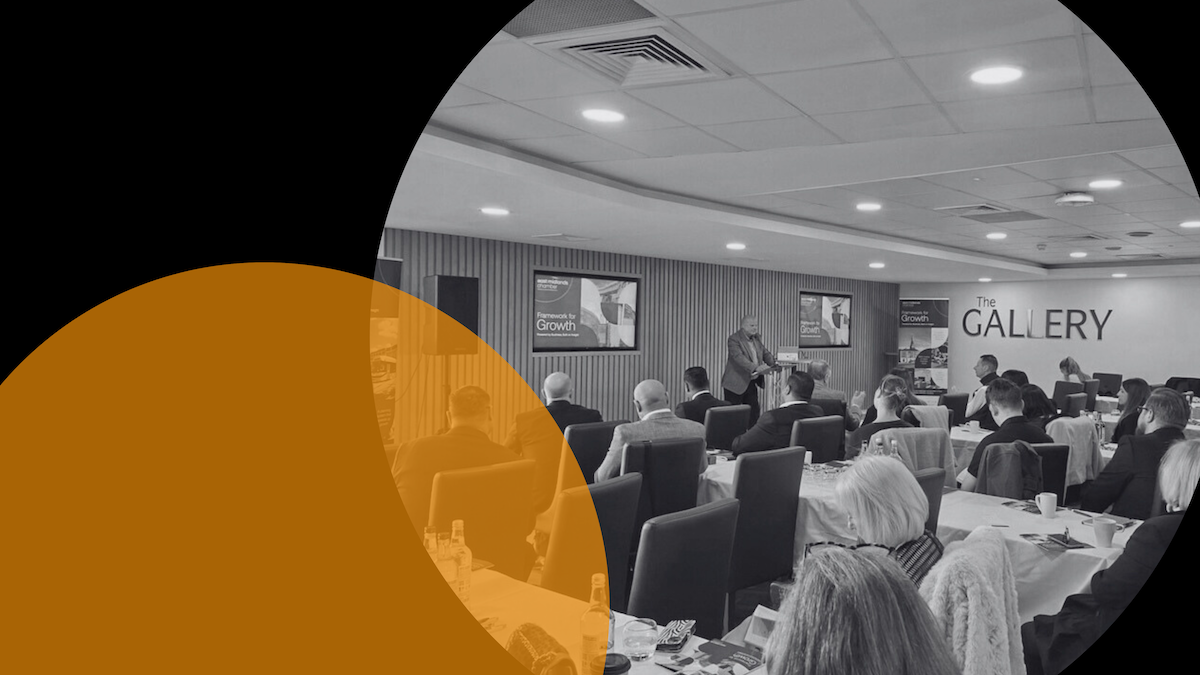
George Oliver
•
26
May
2023
•
4
min read

Loughborough Business School recently commissioned 1284 to share our thoughts on practical communications for effective stakeholder engagement.
We delivered three presentations (to audiences in Loughborough, London and Glasgow) about some of the tools we frequently use when sharing and measuring comms.
Our audience were senior health and safety professionals from universities across the UK.
They were receptive and engaged in looking for new ways to get their important message acted upon within their networks.
In this blog post, we provide a summary overview of four key points we covered during the presentation - and share five takeaways from the sessions.
Our presentation began at the top level, focussing in on efficient planning of strategic communications.
Developed by the Government Communications Service, the OASIS framework provides a series of steps designed to bring clarity and order to campaign planning.
Importantly, it makes the process of stakeholder communications more measurable and targeted - reducing waste and inserting campaign KPIs from the outset.
The acronym stands for Objective, Audience, Strategy, Implementation, and Scoring and the framework is widely used across central and local government.
The group discussed how the OASIS framework might be used in conjunction with other tools (such as the Power/Influence Matrix) in segmentation, identification of target audiences, and evidencing ROI.
After identifying the need for a planned approach, we moved on to the stages and key considerations of effective message delivery.
To do this, we discussed how Stuart Hall's 1973 encoding/decoding communications framework can give us a series of stages to check off successful message delivery.
This is a significant theoretical concept that highlights the stages between the sender and receiver in the communication process.
The model emphasises the potential barriers and risks of miscommunication -particularly when the intended meaning of the message does not align with the audience's interpretation of it.
On a practical level, we discussed the importance of platform selection in getting messages to the stakeholder in the first place. Will they open the email? Can they be reached through a meeting agenda?
Added to that, we considered the use of call-to-action prompts as a means of logging the feedback identified in Hall's model.
And we discussed the importance of context in ensuring the right safety message lands in the right place at the right time to prevent risk to students, staff and campus visitors.
• Small business PR tips
• Regional media updates
• Local innovation & funding
By signing up, you agreeing to receive email marketing communications from 1284.
Assuming Hall's steps are followed - and the message is delivered and received by the stakeholder segment as planned - the content is, of course, key.
We went on to explore how the content of the message might persuade the audience to take the action desired by the sender.
In doing this, we looked in very broad detail at three fundamental methods of being persuasive:
In terms of rhetoric, we looked at the clear logic of the safety message, the undoubted ethos of the messenger, and the value of resonating emotionally to ensure success.
For persuasion, we considered Robert Cialdini's Six Principles of Persuasion (1984) - especially how reciprocity and authority might be useful in stakeholder communications.
We finally returned to the Government Communications Service, discussing how the Behavioural Insight Team and the EAST framework use Nudge Theory to shape messages that encourage the desired action.
We looked at an example from the BIT's work on framing messages that drive change on a societal scale and considered its application in stakeholder engagement.

We wrapped up the sessions by suggesting a range of simple, low-cost, and practical tools for measuring stakeholder engagement.
Scoring, as outlined in the OASIS planning stage, is crucial for benchmarking campaign success and demonstrating ROI.
Measuring some communications outcomes can be challenging.
But finding ways to benchmark and collect outcome data adds value by demonstrating ROI and engagement beyond outputs.
Campaign metrics also increases the likelihood of influential decision-makers from other functions paying attention.
Tools can also be used to test whether segmentation is working, messages are being received, and tracking response through to call-to-action.
As well as traditional tools, such as posters, emails and meetings, five digital engagement tools we discussed were:
Stakeholder engagement communication is a huge subject with much more to be considered than our three one-hour slots made possible.
So we concluded our presentation with five principles for getting started with stakeholder communications.
Advanced Technology Innovation Centre (ATIC)
5 Oakwood Drive
Loughborough
LE11 3QF
Company number 12756354


